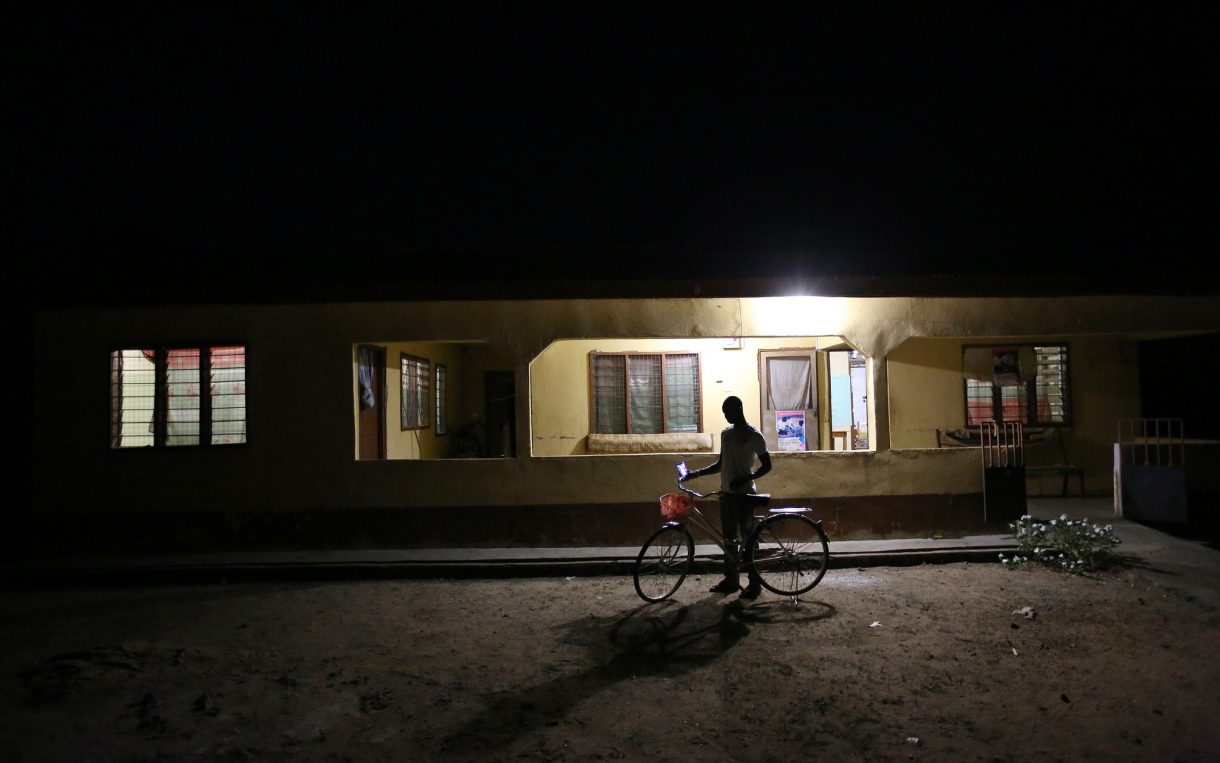Can expanding access to electricity increase income in the poorest parts of the world?
 A boy stands outside a health clinic in Ghana. Photo: George Osodi/Panos for Oxfam America
A boy stands outside a health clinic in Ghana. Photo: George Osodi/Panos for Oxfam America
Evidence suggests families may need more than light to transform darkness into economic opportunity.
Access to electricity has its well-documented benefits. Connected households use it to get priceless information through radios, cell phones, and television. Families save on trips to purchase things like batteries and kerosene fuel, and the positive impacts can be especially large for women who tend to be responsible for household chores.
But a new report by Oxfam reveals the benefits of expanding access to electricity into rural communities are less conclusive when focusing on economic impacts like raising incomes: While positive overall, they vary widely on a case-by-case basis and have been frequently described as “disappointing.” Most notably, they are extremely difficult to realize among the poorest and most remote populations.
No one said ending the injustice of poverty was going to be easy. And that’s why we need to learn as much as we can to get things right.
A Bright Idea
Electrification as a means to drive development has a long history. It was pursued vigorously in the world’s largest developed economies in the 1920s—especially in the US and the former Soviet Union—with a second wave of interest in the developing world in the 1970s.
Now, with just under 1 billion people lacking access to electricity, there is a renewed push to achieve universal electrification as part of the UN’s Sustainable Development Goals.
It’s clear that access to electricity is central to economic productivity in industrialized economies. For that reason alone, one might assume that providing poor and remote populations with access to electricity would galvanize the local economy, thereby making electrification a central tool for fighting poverty.
But what exactly is the relationship between electrification and household incomes?
What We Learned
Reading individual studies suggests mixed results. Some papers indicate large positive economic impacts, or “productive use,” while others suggest no such impacts at all. Notably, studies generally reveal a lack of positive evidence among poor populations and in very low-income countries. The trend is particularly acute in sub-Saharan Africa where the most significant energy access challenges exist.
Literature reviews that consider the impact of electrification across a large number of studies come to similar conclusions: The impacts on income are positive overall, yet the variability in results is extremely large—with some studies even showing negative impacts.
So what explains this variability?
- The length of time a community has been connected to electricity and whether that electricity is reliable can affect whether families harness its power for economic benefit.
- Access to electricity by itself sometimes isn’t enough. Wrap-around services such as access to credit—to support the purchase of electric appliances and to start business ventures—as well as education on the value of energy also appears to matter. Some studies point to the need for complementary infrastructure, such as roads and telecoms.
- Studies vary in terms of quality (and therefore findings), in part given their relative ability to control for some of the key factors listed above.
Most notably, we found that access to markets, or the existence of an established and thriving economic base in the community, was the most important factor in seeing improvements in the economic well-being of newly connected areas.
In other words: If you have no one to sell things to, getting access to electricity won’t necessarily boost your income, regardless of what else you may get with it.
Where We Go From Here
Oxfam convened a session this week at Duke University bringing together researchers, advocates and practitioners from across the US to grapple with these insights, what they mean for advocacy, and what a future research agenda might look like. (Proceedings of the event are now available through the Nicholas Institute).
Leading researchers confirmed the messy findings, attributing them to a host of factors specific to the local contexts where these projects are taking place. The group discussed possible solutions including linking electrification with complementary services, undertaking integrated development planning, and focusing on areas with high demand for electricity where the possibility of productive use could be higher.
But the challenge remains—the uphill battle that is helping the poorest and most remote households benefit from expanding access to electricity.
Download Oxfam’s research to learn more about electricity and the fight to end poverty.